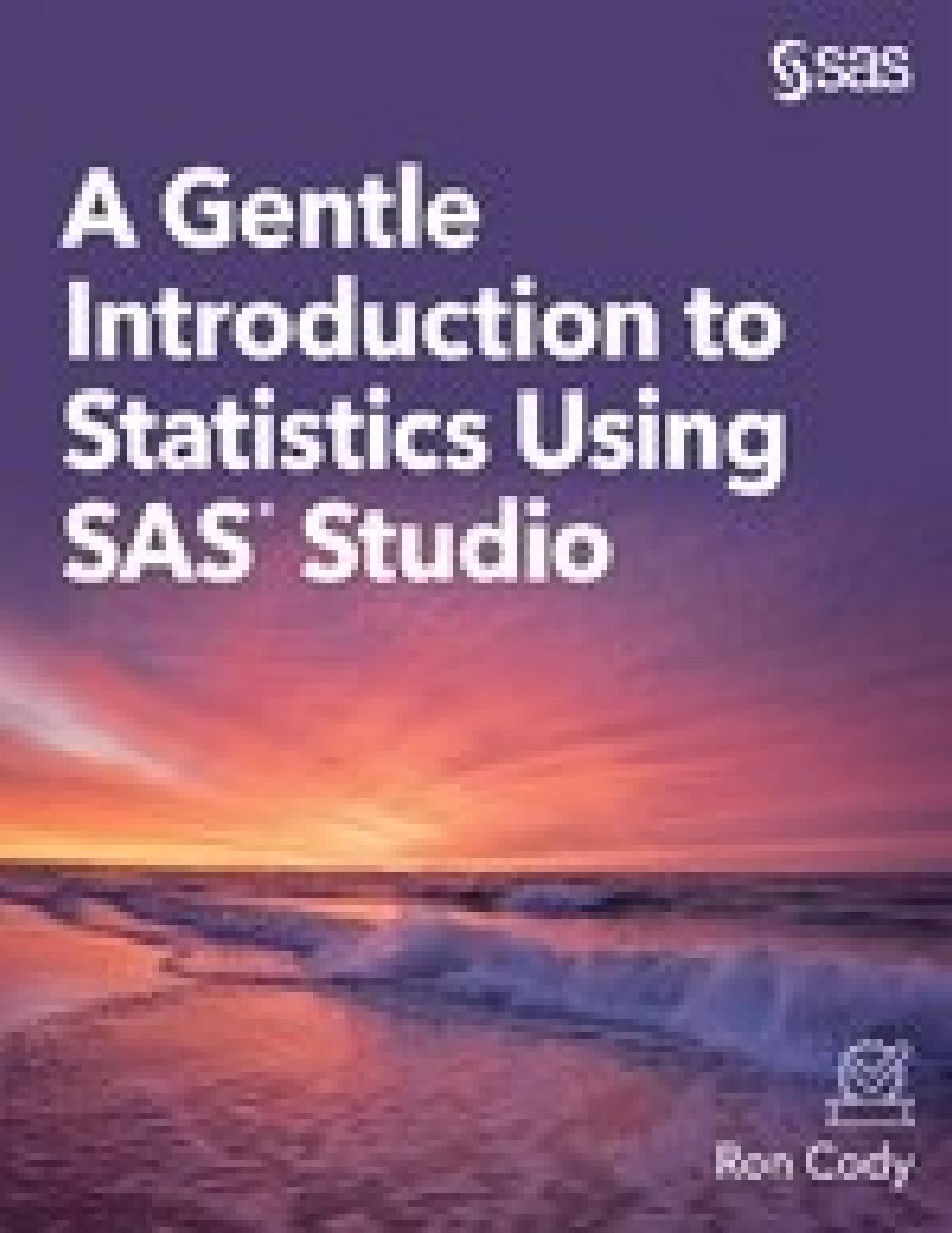A Gentle Introduction to Statistics Using SAS Studio (Hardcover edition) by Ron Cody

Author:Ron Cody [Ron Cody]
Language: eng
Format: epub, pdf
Publisher: SAS Institute
Published: 2019-09-26T16:00:00+00:00
Next, click the OPTIONS tab. For this example, you are using all the default values except for a request for Pairwise multiple comparison analysis (asymptotic only).
Figure 9.19: Options for the Analysis
Now that you have entered your choices on the DATA and OPTIONS tabs, it’s time to run the task. The first part of the output is shown in Figure 9.20.
Figure 9.20: Results from the Wilcoxon Rank Sum Test
To perform the Wilcoxon Rank Sum Test, all the scores are sorted in order from the lowest score to the highest score. You then assign a rank to each score: the lowest score is rank 1, the next highest score is rank 2, and so on. If several scores are equal, the Wilcoxon test assigns the mean rank to each of the values (don’t worry about this detail for now). Along with the fish weights, you also know the species associated with each rank. There is a total of 71 fish weights (34 + 20 + 17), so the ranks range from 1 to 71. If the null hypothesis is that the fish are all about the same weight, you would expect the sum of ranks for each species to be about the same. You use this idea to form your null hypothesis. If one or more of the fish species has a very high or low sum of ranks, you might expect that there are differences in weight based on species.
The table above shows the sum of ranks for each of the fish species and the expected value if the null hypothesis is true. Notice that the sum of Scores for Roach (224.5) is much lower than the sums for Bream or Pike, making you suspect that Roach are typically lighter than either Bream or Pike. To decide whether you should reject the null hypothesis that all the three species have equal weights, you look at the p-value at the bottom of Figure 9.20. Because the p-value is shown as <.0001, you reject the null hypothesis and conclude that one or more pairs of means are significantly different. But, which pairs of fish species are different? We will answer that question in a minute.
The next part of the output shows box plots for each fish species. Box plots are appropriate for this display because you are conducting a nonparametric test.
Figure 9.21: Box plots for Each Species
Download
A Gentle Introduction to Statistics Using SAS Studio (Hardcover edition) by Ron Cody.pdf
This site does not store any files on its server. We only index and link to content provided by other sites. Please contact the content providers to delete copyright contents if any and email us, we'll remove relevant links or contents immediately.
Sass and Compass in Action by Wynn Netherland Nathan Weizenbaum Chris Eppstein Brandon Mathis(11620)
Implementing Enterprise Observability for Success by Manisha Agrawal and Karun Krishnannair(8223)
Supercharging Productivity with Trello by Brittany Joiner(7466)
Mastering Tableau 2023 - Fourth Edition by Marleen Meier(7224)
Inkscape by Example by István Szép(7110)
Visualize Complex Processes with Microsoft Visio by David J Parker & Šenaj Lelić(6798)
Build Stunning Real-time VFX with Unreal Engine 5 by Hrishikesh Andurlekar(5821)
Design Made Easy with Inkscape by Christopher Rogers(5078)
Customizing Microsoft Teams by Gopi Kondameda(4626)
Business Intelligence Career Master Plan by Eduardo Chavez & Danny Moncada(4580)
Extending Microsoft Power Apps with Power Apps Component Framework by Danish Naglekar(4220)
Salesforce Platform Enterprise Architecture - Fourth Edition by Andrew Fawcett(4098)
Pandas Cookbook by Theodore Petrou(4077)
Linux Device Driver Development Cookbook by Rodolfo Giometti(4030)
The Tableau Workshop by Sumit Gupta Sylvester Pinto Shweta Sankhe-Savale JC Gillet and Kenneth Michael Cherven(3884)
Exploring Microsoft Excel's Hidden Treasures by David Ringstrom(3378)
TCP IP by Todd Lammle(3138)
Applied Predictive Modeling by Max Kuhn & Kjell Johnson(3024)
Drawing Shortcuts: Developing Quick Drawing Skills Using Today's Technology by Leggitt Jim(3007)
